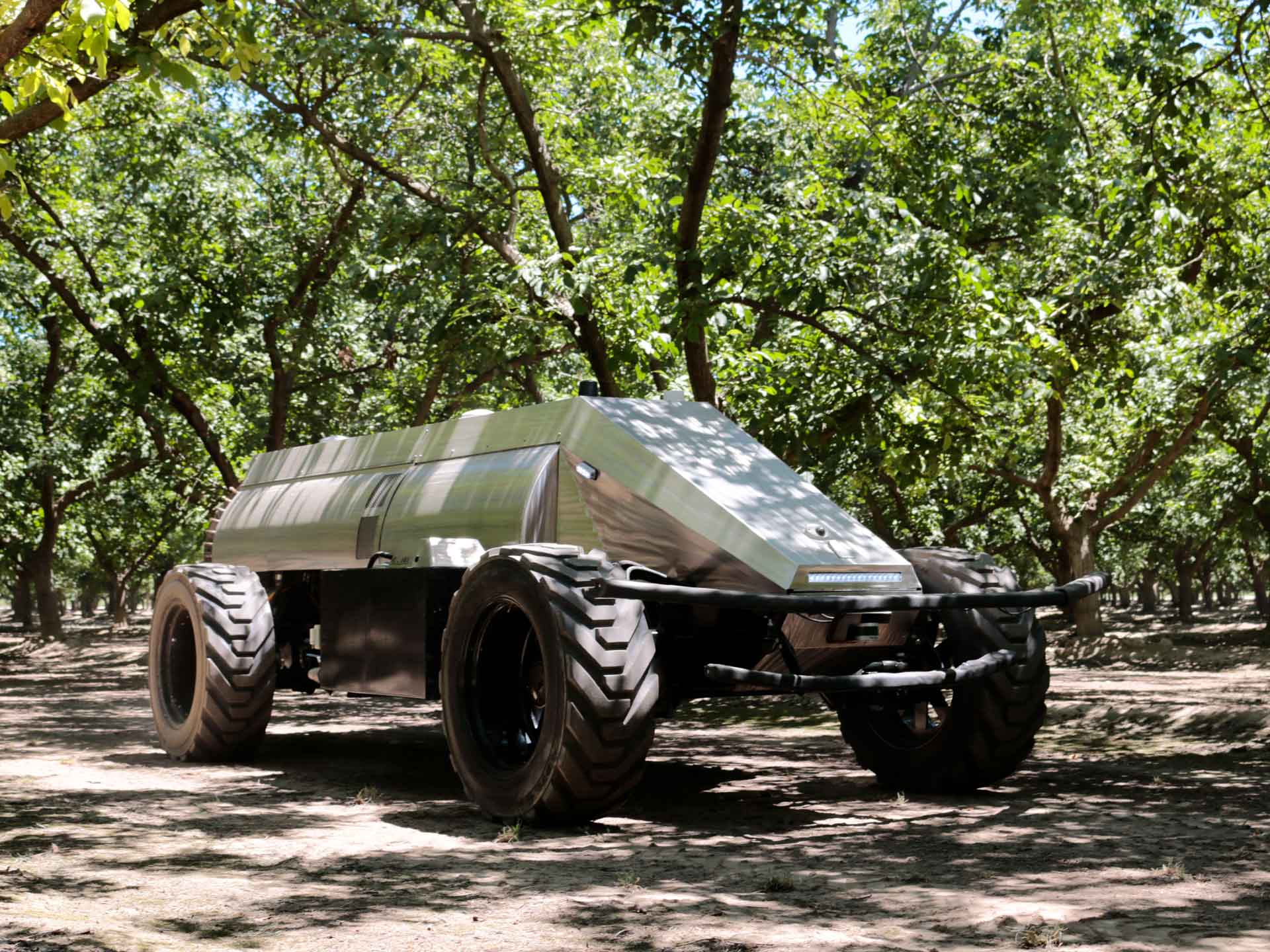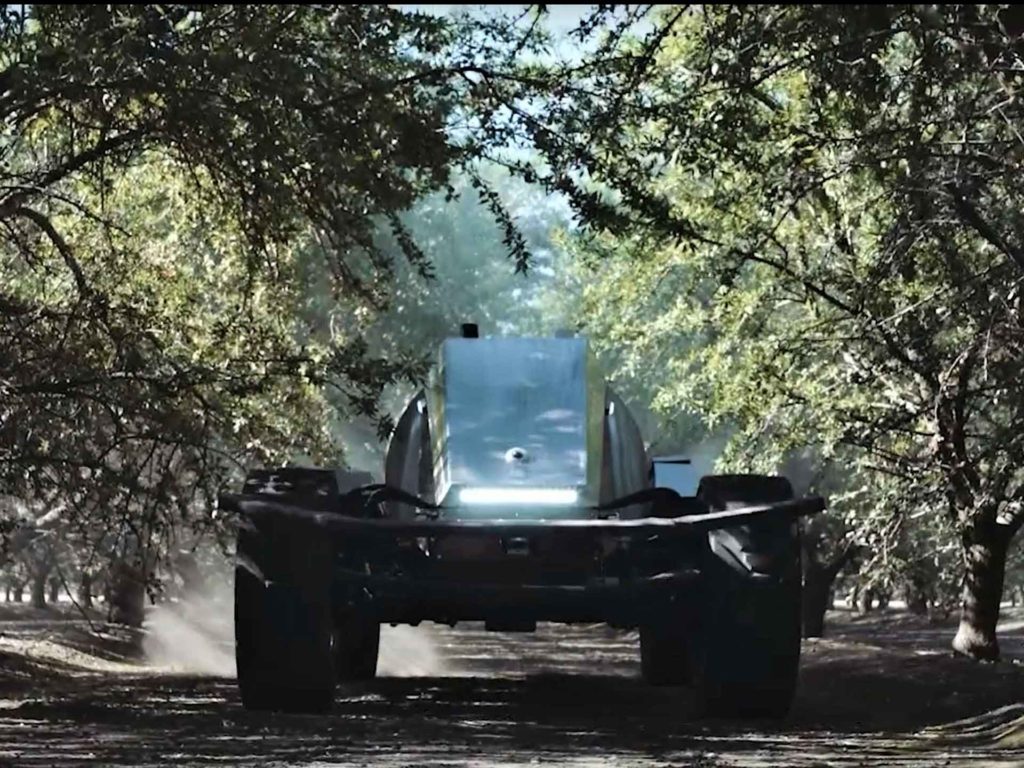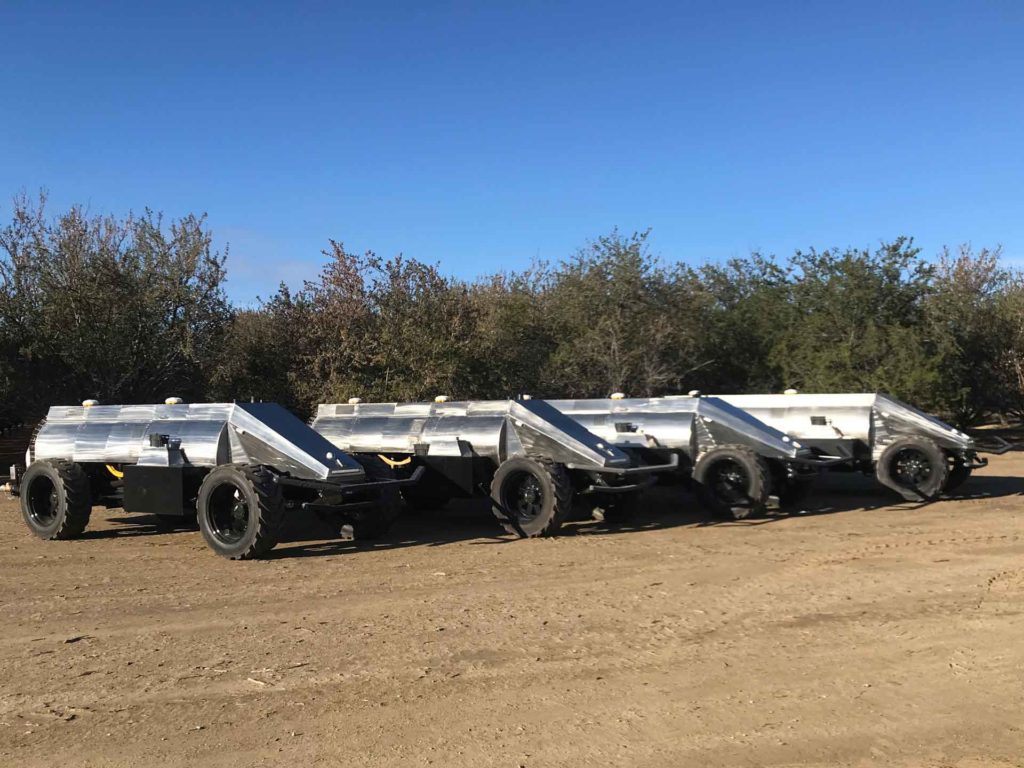
The agriculture industry has been steadily adopting more and more digital advancements that have been made available since the coming of the new millennium. The implementation of technological breakthroughs appears to be coming at a more rapid pace as connectivity improvements and software innovations increasingly develop. One particular area of technological advancement that is projected to grow significantly in the coming years is the development and demand for autonomous farming equipment.
Autonomous farm equipment can include tractors, harvesters, thinners, sprayers, as well as any other equipment that does not require a human operator to be onboard the machine to operate it. Using autonomous equipment can assist growers in a multitude of areas. For California farmers in particular, the necessity of maximizing the efficiency of an orchard in every possible area is highlighted by the consistently increasing number of regulations combined with the steadily declining amount of available labor.
“We talk to so many growers that say, ‘I’ve got this equipment, that’s not the problem. I can’t find the people; therefore, I’m not getting the sprays on my trees that I need to get on. So, if I can just get the sprays on my trees, that’s going to be huge for the return to me, that my crop with give me,’” said Gary Thompson, Marketing Director for GUSS Automation, LLC.
GUSS is an acronym for ‘Global Unmanned Spray System.’ The GUSS rig is an autonomous-driving agricultural sprayer invented by Dave Crinklaw, initially as a means of improving the efficiency of his own commercial spraying business. The lack of available labor to operate tractors necessitated the creation of a driverless system. Understanding the labor challenge in California was not likely to improve, the logical move was to start working on a manufacturing facility to make the GUSS available for purchase to other growers looking to address operational needs.
The 2019 labor survey conducted by the California Farm Bureau Federation and the University of California, Davis, found that 56 percent of farmers who participated indicated an inability to find enough labor at some point over the past five years. Nearly a full 20 percent of all the farmers who participated in the survey identified themselves as tree nut growers. Implementing autonomous equipment whenever possible can reduce the amount of labor necessary, as well as substantially lessen the amount of time required to complete certain tasks.

Less Time in an Orchard Means Less Money Spent
While individual orchards and materials can vary, Thompson noted that in general each GUSS rig can complete six acres an hour. A single worker can monitor a total of eight GUSS units that are simultaneously operating in an orchard. “It’s a very efficient way of spraying as compared to having employees on the tractors. You have a lot less stopped and down time,” said Thompson.
Regulatory changes to how often and what times agricultural workers can be deployed in an orchard can also be addressed through autonomous equipment. Materials that have a limited window of time that an application can be made can sometimes be at odds with labor availability and compensation rates. Deploying autonomous equipment can assist with a timely application, particularly when dealing with a large amount of acreage.
“There’s just really no reason for the machine to stop with the exception of getting its material refilled and getting diesel put in it,” said Thompson. “These things run day and night—there’s 24-hour a day operation—you can just go, go and go.”
Deploying an autonomous piece of farming equipment can help to overcome the issue of labor availability and reduce the time required to complete certain tasks. Equipment such as a GUSS rig can replace a group of tractor operators with a single person to oversee a group of tractors. Lowering the number of workers that are necessary can also reduce the number of mistakes and inaccuracies in many cases.
Fewer Workers, Less Opportunity for Error
Driverless tractors and other autonomous agricultural equipment not only help reduce the amount of labor that is required on a farming operation, but also improve the accuracy and efficiency of record keeping. As more and more regulations are implemented that require detailed records of material applications and other farming necessities, digitalized equipment will increase in value to a grower.
“GUSS spray rigs record everything that they do. So, the application rate, the flow, everything. Where they are, what time it is, what day, which ranch. We even type in what we’re spraying—what type of tree—what material we’re spraying,” said Thompson. “At the end of our application all of this is downloaded to a thumb drive and can be handed to a grower.”
Reducing the number of workers also significantly lowers the potential for work-related accidents, as well as costly operator errors. A digitized system that employs machine learning through various sensors which monitor actions in real-time can be immensely more effective than traditional labor. The task performed by an autonomous machine can greatly increase efficiency, replacing the potential of operator error with precise diagnostic capabilities that ensure work is performed correctly.
“[The operator] clicks on any individual rig and it tells him all the pertinent information from that spray rig,” said Thompson. “If there’s a drop or a rise outside of a certain parameter that we set, it’ll alert him to an individual machine that he’s got to check out and see what the problem is.”
The GUSS rigs are only one example of how autonomous farming equipment can improve efficiency on a farming operation. There is a plethora of driverless equipment already available to farmers and development is projected to expand rapidly over the coming years as awareness and demand increases.

The Future Appears More Autonomous Than Ever
The idea for autonomous farming equipment has always been there but remained solely as a concept, for the technology required had not yet reached the point of viability of development. The expansive implementation of the ‘internet of things’ combined with advancements made in robotics technology, has only been made available on a large scale in roughly the past decade. Increasing demand for autonomous farming equipment, fueled by pressure for higher production efficiency, will continue to spur even more development of the technology going forward.
According to market research from Global Market Insights, Inc., the market value for autonomous farm equipment is expected to more than triple by 2024, reaching a value of more than $180 billion. The size of the autonomous farm equipment industry size was valued at just $55 billion in 2016, with expansive growth expected by the majority of industry experts.
A similar report titled “Autonomous Farm Equipment Market-Growth, Future Prospects and Competitive Landscape, 2017-2025,” published by Credence Research, indicates that tractors accounted for the largest share of the overall global market for autonomous equipment in 2016. Over the next few years autonomous harvesters are projected to overtake tractors in terms of market share, as increasing development and demand is set to drive the sector forward.
The more interest there is in autonomous equipment, the more rapidly development in the area will continue. Equipment will also start to become more affordable as with other technological breakthroughs that eventually move into the mainstream. As labor costs and regulation continue to put increasing pressure on the agricultural industry, the notion of deploying a fleet of autonomous thinners, sprayers and harvesters may become a reality sooner than anticipated.










